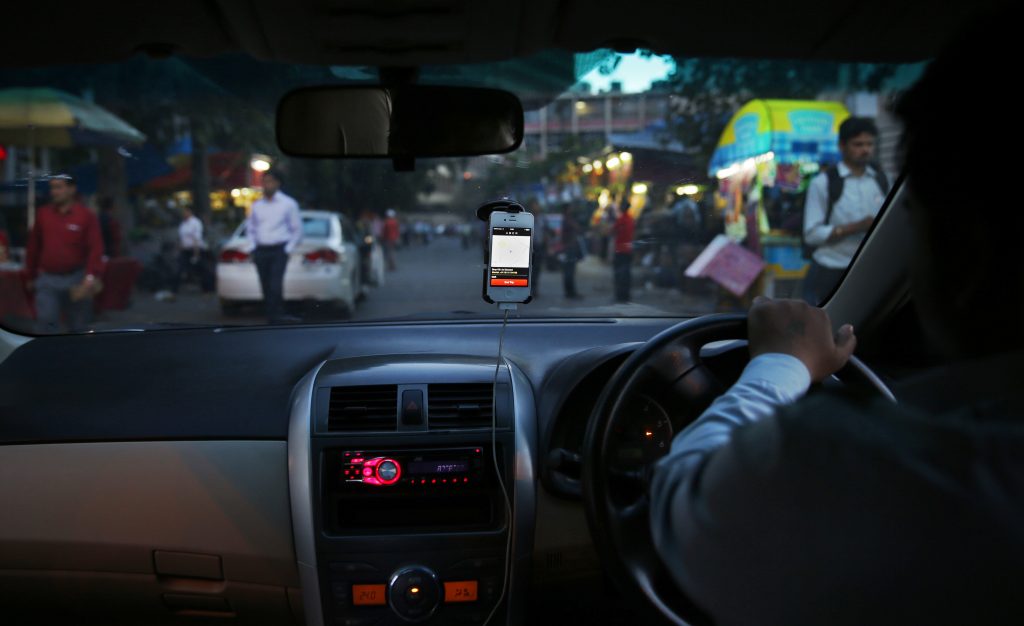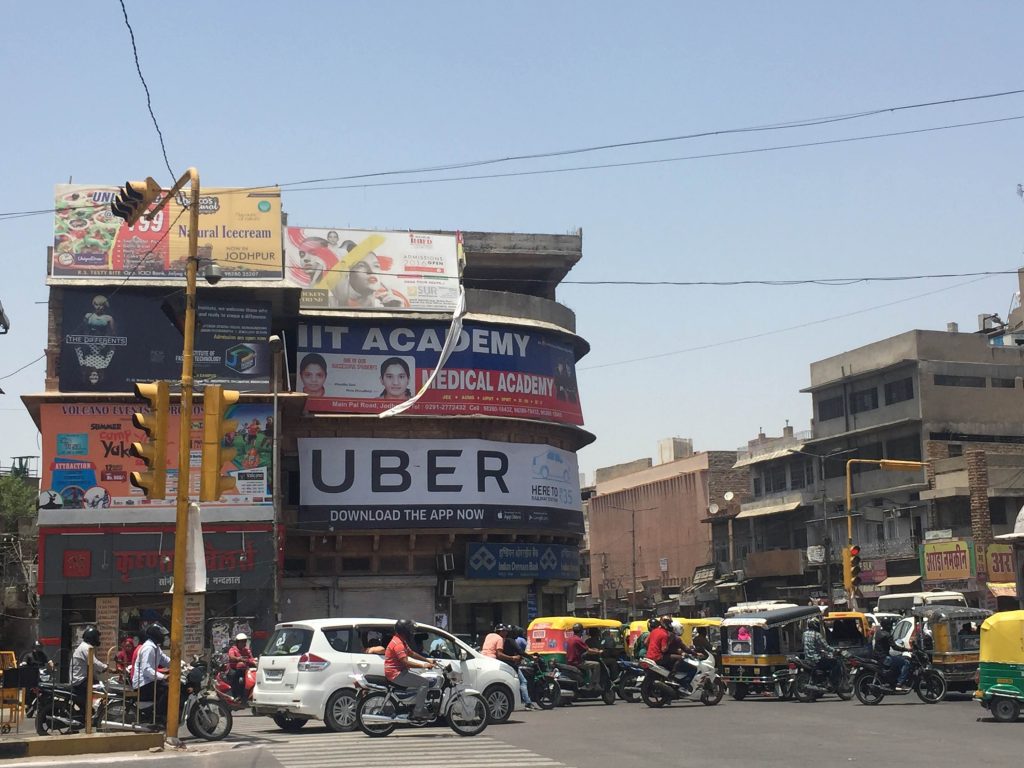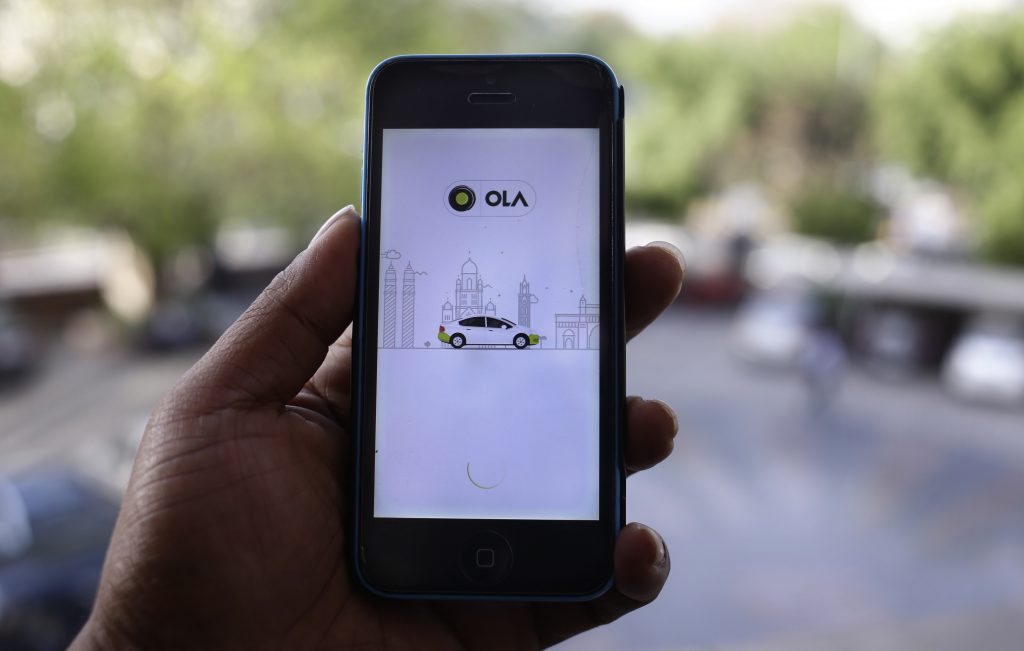India’s Uber Dilemma: Entrepreneurship or Exploitation?

Commuting in Indian cities demands perseverance and innovation. Four hundred million urban residents in India navigate city streets every day. Buses can be unreliable and trains crowded; sidewalks are rare, and mixed traffic puts cyclists at risk.
Private companies like Uber offer a potentially more comfortable transportation service. Uber, like its India-based rival Ola, is an app-based car service that uses smartphone technology to match drivers to passengers, while setting some standards and fares. Now operating across 27 cities in India with about 250,000 drivers, Uber claims India as its third-largest global market in terms of number of trips made.
Uber has certainly changed the experience of work and life in urban India. It has offered another travel option in often transportation-challenged cities, and drivers are enthusiastic about the new work. But the anthropological fieldwork we’ve conducted over the last nine months suggests that the service does not always live up to its promise—for passengers or drivers.
Uber, like Airbnb, is part of the so-called gig economy, powered by self-employed workers who take short-term jobs or offer short-term leases. In India, as in the other 70 countries where it operates, Uber describes its drivers as empowered entrepreneurs rather than employees. But it’s important to remember that self-employment isn’t necessarily empowering. Driving for Uber means having little to no liability protection in case of accidents, no benefits or job security, and often poor compensation. While a personalized work schedule is frequently celebrated as flexible, it also means that the onus is on Uber drivers to work harder and longer to make decent money. It is not yet clear whether Uber will revolutionize travel in India’s cities, or create new problems of uncertain employment.
When Uber expands to a new Indian city, it offers drivers attractive incentives, and they race to cash in on those initial promises. In the basic arrangement, drivers and Uber split the fare, and drivers can earn extra when customers give their trip a high rating. Most drivers describe Uber’s direct digital payment system as bahut badhiya (excellent). “Our money comes on time, and there’s no haggling with a boss,” one driver said.
Over time, however, the incentives are discontinued and the payment rates go down. When the service first launched in Jodhpur, drivers earned an extra 25 rupees (about 37 U.S. cents) for every five-star rating they received from a passenger. Soon they were earning just 15 rupees (about 22 cents) for every such rating, a 40 percent decline. Now their incentives aren’t based on ratings at all. In Delhi, drivers earned 14 rupees (about 21 cents) per kilometer a year ago; now they earn 7 rupees (about 11 cents), a 50 percent decline.
One Jodhpur driver, a college dropout who heard he could make big bucks with Uber, said he has to drive 10 to 12 hours a day to make 30,000 rupees (about US$450) a month. Compensation is higher in Delhi, where drivers can make upwards of 50,000 rupees a month (about $750), which is equivalent to a starting salary in the IT sector. While that may be decent money in the short term, the work comes with long hours and uncertainty.
Speaking in Delhi recently, David Plouffe, former campaign manager for Barack Obama and now an Uber adviser and board member, proudly noted that drivers are extremely engaged with the company, opening 40 percent of emails or other messages they get from management. “Even the Obama campaign never cracked 20 percent,” said Plouffe. But engaged doesn’t mean the drivers are loyal or happy. In fact, Indian drivers often describe all these communications as a source of anxiety, since the company is constantly changing its compensation structure and informing drivers through text messages. “So much messaging all of the time!” one Uber driver said, showing a slew of Uber announcements on his phone. Commenting on the company’s fluctuating policies, another driver said, “There’s no bharosa [trust] with Uber.”
In addition, the algorithms supporting Uber traffic management don’t always work perfectly. One driver mentioned receiving a message that demand was high and rates for driving would “surge” on the outskirts of Jodhpur. Then, after several hours without any rides, he started receiving messages that demand was now high in the center of the city. For passengers, estimated arrival times are often optimistic. Because unreliable geocoding makes navigating by GPS difficult in Indian cities, connecting with a driver often requires that the passenger make at least one phone call to explain his or her location.
On top of this, drivers are understandably concerned about driving dead miles. When one passenger asked why she had to confirm her ride request and location by phone after having already confirmed those details through the app, the driver replied, “Sorry, ma’am. It’s just that some passengers give us dhoka [betrayal] by either canceling as we arrive or forcing us to take them to some far-off place where we won’t get another passenger. Then we have to drive all the way back empty.” To improve that situation Uber recently messaged some of its passengers with tips on how to be a “pro rider,” emphasizing the value of a driver’s time.
Despite the illusion of easy employment Uber cultivates (all a driver needs is a phone and a car), drivers sometimes need each other’s help. In Jodhpur, there’s an unofficial Uber stand where drivers wait together for pings on their phones. Some drivers describe helping new applicants with their paperwork and advocating for others when Uber cancels its “partnership” with them because of poor passenger ratings. (Last year, Uber drivers in Seattle became the first to fight for and win the right to unionize, and just last month, New York City Uber drivers won the right to organize in a drivers’ guild.)
Many Uber drivers in Jodhpur try to supplement their income by arranging private bookings with their Uber passengers. This is in part because Uber drivers in India are more likely than their counterparts in the United States or elsewhere to drive full time. Indian vehicle-registration policies require that vehicle owners register their cars as either personal or commercial vehicles, and once a driver is staked in commercial driving, Uber is just one avenue for connecting with passengers. In fact, most Uber drivers also drive privately, as well as for Ola.
It’s tempting to believe that Uber drivers and other gig-economy workers exercise autonomous choice and are thus empowered entrepreneurs. But when Uber drivers choose if and when to pick up passengers, or Airbnb hosts choose when and with whom to share their homes, or adjunct professors choose when and where to teach, they are exercising that choice from a position of vulnerability and from among a limited set of risky options.
In India, many drivers and passengers see Uber as a thrilling novelty. That probably won’t last: Betrayal (dhoka) and lack of trust (bharosa) are likely to endure as defining features of the growing gig economy.




































